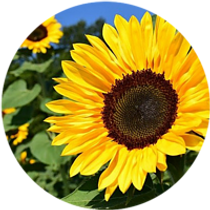
Gardens conjure up images of sunny sunflowers, colorful coneflowers, striking snapdragon, and delightful dahlias. They add visual and textural contrast to our welcoming backyards. You include yet another dimension, called gustation, when planting herbs in a garden. Gustation refers to our taste bud receptors that bind with food molecules and send messages of flavors to our brains.
I enjoy growing herbs in my garden. It’s so easy to go outside and clip the fresh spice and generously add it to my favorite recipe. But beware, you may be in for a big disappointment if you randomly place herbs together with your flowers or herbs.
(Some of the links in this post are affiliate links in which I receive a small compensation for the sales of certain items.)
(As an Amazon Associate I earn from qualifying purchases.)
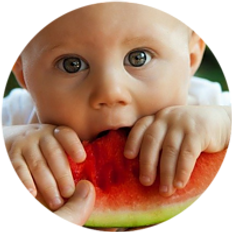
Let’s Begin At The Beginning!
There are basics to consider when planting an herb garden outdoors. As is the case with flowers, you have to pick the correct spot. You want the herbs to be in close proximity to your kitchen. It’s much easier to step out your back door to have quick access to your herbs rather than traipsing all the way to the back of your property just for a few cuttings.
Herbs also need access to a water supply, and when selecting a location you need to consider where the sun is during the course of the day. Refer to my post, I Think I Can, for other information on the basics of planting your garden.
Not All Herbs Are Friendly
(As an Amazon Associate I earn from qualifying purchases.)
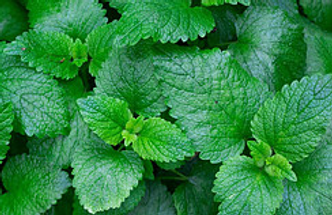
There are many kinds of herbs. As a gardener, you need to decide which herbs you would like to have in your garden. After you have decided on which herbs you’d like to grow you should research which plants complement each other. For instance, rosemary, oregano and sage are great companions because they share the same environmental requirements, including their needs for sunlight exposure and water. So a good rule of thumb would be that if they share the same growing requirements, they will probably be very friendly with each other…..good buddies!
Oregano and thyme can be used as ground cover in the front of your flower garden. It’s easy to decide which herbs will complement your flower bed if you pair the growing environments with those of flowers.
Some Problem Herbs:
Be careful which herb you choose when growing herbs in a garden. Here are a couple of herbs that dictate specific environments for growing.
Although mint is pretty and smells wonderful, it is very invasive and will take over other plants within a season. It’s best to plant mint in a container where you can keep it under control.
Herbs will not thrive well together if the plants you select do not share the same environment for growing. Some herbs and flowers that do not complement each other may even affect the taste of the herbs and will stunt their growth. One other herb that needs to be planted in a separate container is fennel. Fennel will kill it’s neighbors if grown in a garden and planted next to an incompatible plant.
So beware which flowers and herbs you plant side by side.
=====Click Here For Herbs and Spices From Etsy=====
Herbs To The Rescue!
There are many herbs that help keep pesky insects at bay. I will explore a few of them.
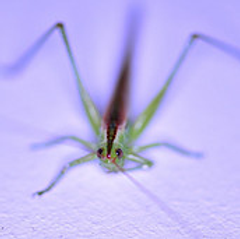
- Mint – As I said before, it is best to plant mint in a container. It is also easier to place mint in strategic areas of your garden if it is contained in a pot. Mint naturally repels mosquitos. This is a big plus if you enjoy entertaining or resting in your garden in the evening. You can also snip some mint to make fresh mojitos or grind the leaves and add it to a fresh glass of iced tea.
-
Rosemary – Rosemary is also good for driving mosquitos away and it repels flies. Awaken your olfactory sense by just rubbing your fingers down a sprig of rosemary. The aroma is wonderful! I love marinating a pork loin with rosemary. It adds such a unique flavor.
-
Lavender – This herb has a wonderful fragrance. It can be used as a tea or in a pretty cache in your dresser drawers. Even though humans like the aroma of lavender, certain insects do not. Fleas, mosquitos, flies, and moths are repelled by this fragrance. Lavender likes a sunny place and has a beautiful flower which will look nice scattered in pots around your patio or in a garden adjacent to a deck.
-
Chives – Add some chives to food if you enjoy making potato recipes, soups, and omelets. It will add a very nice garlicky, onion flavor. They have a pretty purple, lilac-colored flower but are disliked by aphids, flies, and certain types of beetles. The flowers of chive are also edible.
Flowering Herbs – Let’s Add Some Pizzazz!
I’ve mentioned some herbs that have beautiful flowers, but there are many more that will add color and interest to your garden. Previously I noted the importance of compatibility with the surrounding plants and of the appropriate exposure to sunlight and water requirements. In addition to this you want to ensure it has lasting color throughout the season.
You can fill in spots by adding these herbs.
Bee Balm – The herb bee balm is one of my favorites for adding unusual color to the garden, but beware, they become invasive. They have beautiful red flowers on top of long elegant stems and come in pink and purple shades in addition to the red. They attract butterflies, hummingbirds, and bees which will help pollinate your garden. Their leaves are used for tea or flavoring breads.
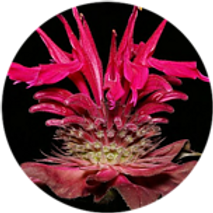
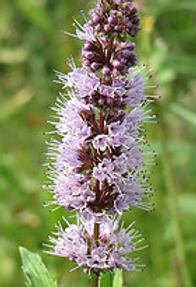
Dill – The tall chartreuse yellow flowers that perch on tall stems make this herb desirable when adding color to your garden. They have feathery leaves that blow like heather in a field. My mom used to make dill pickles every summer from cucumbers and the flavor can’t be beat!
Rosemary – The fragrant aroma of rosemary blooms in the early summer and has beautiful spiky purple flowers. It is also drought tolerant and can be used in soups and casseroles.
Spearmint (mentha spicata variety) – Mint has beautiful lilac-pink bells and flowers in mid-summer. But remember, like other mints it is invasive so plant it in a container.
Pineapple Sage – This herb has a strong pineapple fragrance and it produces scarlet blooms at the end of summer. The smaller tender leaves can be used in salads, chicken dishes, and breads.
One Last Thought!
Herbs do have beautiful flowers. However, flowers usually indicate the end of their life cycle. Snip their buds to prevent them from shortening their lives. This also encourages them to thrive throughout the season. When the end of the growing season approaches, enjoy their amazing colorful blossoms and thank them for providing extra flavor to your meals.
The Versatile Herb
Planting herbs in a garden has lots of benefits. Herbs can repel annoying insects, enhance your favorite recipes, and add delightful color to a garden. So the next time you plant your flower garden, why not consider adding some herbs?
Please leave a comment below. I’d love to hear your thoughts.
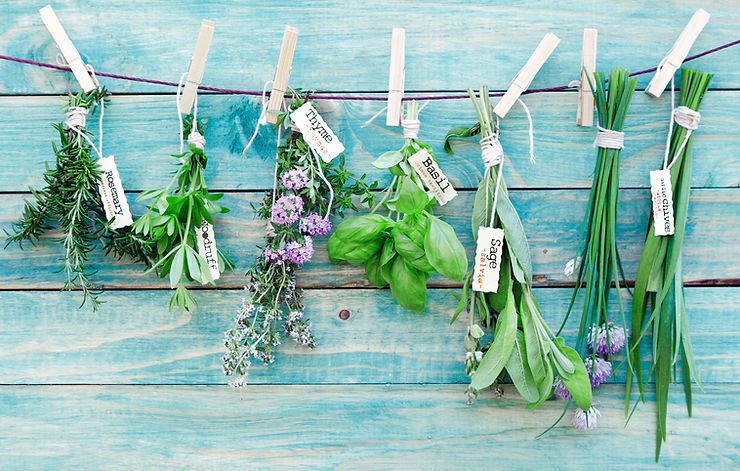
Happy Gardening!
Nina
